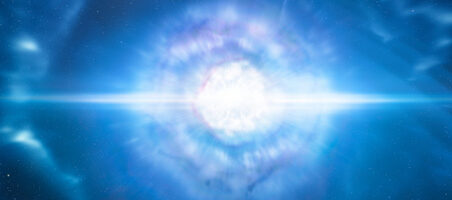Columbia Researchers Use Machine Learning To Detect Gravitational Waves
August 24, 2020

Four years ago, Columbia researchers celebrated the most significant scientific discovery of the 21st century: the detection of gravitational waves. The finding, made by the LIGO Scientific Collaboration in which the Columbia team played a key role, confirmed the last prediction of Einstein’s theory of relativity—the existence of gravitational waves. The discovery allowed for a deeper understanding of the waves and other astrophysical phenomena.
Recently, the researchers made another breakthrough that solves a decades-old problem at LIGO, which stands for the Laser Interferometer Gravitational-Wave Observatory. They designed a machine learning method that identifies terrestrial artifacts, or glitches, that interfere with gravitational-wave data. The machine learning method scans LIGO’s channels and filters out glitches from gravitational wave signals. The research team published its findings in Physical Review D.
“Our method is the first to monitor all auxiliary data streams on LIGO detectors and classifies what is a terrestrial glitch and what is likely to be a cosmic signal,” said Zsuzsa Márka, who is co-author on the paper, an associate research scientist at Columbia’s Astrophysics Lab, and a Data Science Institute (DSI) affiliate. “It will help the engineers at LIGO hear the very structure of the cosmos.”
The other team members are Szabolcs Márka, a professor of physics at Columbia and an affiliate of DSI; Imre Bartos, a former Columbia astrophysicist who is now assistant professor of physics at University of Florida; John Wright, an electrical engineering professor at Columbia Engineering and DSI member; Robert Colgan, a doctoral student of computer science at Columbia; and K. Rainer Corley, then a doctoral student of physics at Columbia who works as a data scientist for a finance company. Their research is supported by the National Science Foundation.
Each LIGO detector has more than 200,000 auxiliary data channels, and it’s impossible to manually monitor even a subset of the channels. It is even harder to find complex correlations in the channels that reveal glitches, the authors explained. The ultra-sensitive detectors pick up faint echoes of cataclysmic cosmic events such as the birth of black holes. The search for gravitational waves is thus greatly enhanced by the team’s method to prevent glitches from contaminating the fragile wave-data stream.
Zsuzca Márka said it’s hard to fathom the intricacies of LIGO, a detector network with two sites 1,865 miles apart—one in Livingston, La., and another in Hanford, Wash. The LIGO observatories are visible even from satellite orbits. Each site holds vacuum chambers arranged in an L-shape whose arms span 2.5 miles. Lasers shoot beams along those lines and measure tiny space-time ripples smaller even than the size of 1/10,000th of a hydrogen nucleus. “Detecting cosmic gravitational waves,” she said, “is like detecting a millionth of a cent change on the U.S. national debt.”
“The complexity of LIGO rivals the most intricate machines ever built in the history of humanity. And Columbia’s work over the last decade and a half for LIGO has been instrumental in aiding its many discoveries, including the collision of black holes and neutron stars,” she added.
Now, with its machine learning model, the team is once again enhancing LIGO by allowing engineers there to distinguish between terrestrial glitches and signals of gravitational waves. Szabolcs Márka, who has worked on LIGO research for two decades and is married to Zsuzca, said the machine learning method represents a breakthrough in astronomical research that will allow for more “fascinating discoveries about the fabric of the cosmos.” Robert Colgan and John Wright are adept at data science, he said, while he and Zsuzsa are astrophysicists, a combination of skills that make for “an amazing and transformational team.”
“This pioneering proof-of-principle machine learning and data science effort resolved a decades-old problem in LIGO data analysis,” he said. “More advanced implementations shall allow us to derive more astrophysical insights from LIGO data and to create a more sensitive gravitational wave detector network. Our advance highlighted many new opportunities for data science in the 21st century, and we are now boldly charging into the future.”
— Robert Florida